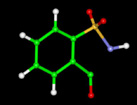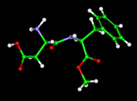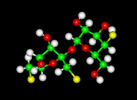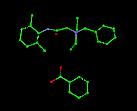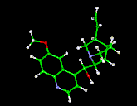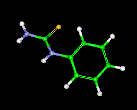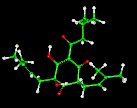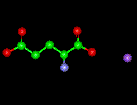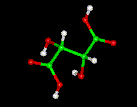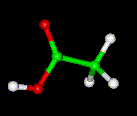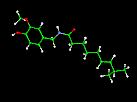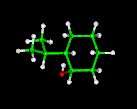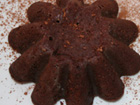Taste Molecules -- The Molecular Basis of Taste
THE MOLECULAR BASIS OF TASTE
Taste reception occurs at the apical tip of taste cells that form taste buds. Each onion shaped taste bud has is composed of 50–100 taste cells that possess microvilli. Each single taste bud contains 50–100 taste cells representing all 5 taste sensations. Embedded in the cell membranes of these taste cells are receptor proteins. Each of the taste receptors are transmembrane proteins which function either by physically binding to a flavor ingredient (sweet, bitter and umami) or by acting as a channel to allow ions to flow directly into a taste cell (salty and sour). This interaction triggers a signaling cascade that culminates with signals to the brain through a network of taste nerve fibers.
In the case of sweet, umami and bitter tasting it is the size and shape and the chemical groups on a tastant molecule which determine any taste it will have as they will determine its ability to dock onto one or more of the different receptor proteins (See schematic or full reference). A single taste cell seems to be restricted to expressing only a single type of receptor strongly supporting the (labelled-line model) as evidenced by data using gene-knockout mice (see data). And further data here, where targeted expression of a novel bitter receptor to bitter (T2R-expressing) cells resulted in dose-dependent aversion to the specific bitter tastant. In marked contrast, directing expression of the same receptor to sweet cells produces animals that are strongly attracted to this bitter tastant.
RECEPTOR PROTEINS FOUND IN TASTE CELLS
SWEET -- Sugars and artificial sweeteners are detected by T1R2 and T1R3 heteromers, (see Margolskee, 2002) UMAMI --T1R1 and T1R3 GPCRs combine to form a broadly tuned L-amino-acid receptor
BITTER-- Bitter chemicals are detected by 30 T2R receptor family members. (see Margolskee, 2002)
SOUR -- Acids are detected by PKD1L3- and PKD2L1 sour-sensing cells (Ishimaru, et al., 2006; Zuker et.al. 2006).
SALT -- Not known although approximately 20% effect may be by amiloride-sensitive sodium channels.
FAT -- Speculative -- CD36 Receptor (see Abumrad, 2005)
EXAMPLES OF TASTANT MOLECULES
TEMPERATURE RECEPTORS
Temperature is an essential element of human taste experience. Food and drink which — within a given culture — is considered to be properly served hot is often considered distasteful if cold, and vice versa. Some sugar substitutes have strong heats of solution, as is the case of sorbitol, erythritol, xylitol, mannitol, lactitol and maltitol. When they are dry and are allowed to dissolve in saliva, besides the sweet taste also heat effects can be recognized. The cooling effect upon eating may be desirable, as in a mint candy made with crystalline sorbitol, or undesirable if it's not typical for that product
Some substances activate cold trigeminal receptors. One can sense a cool sensation (also known as "cold", "fresh" or "minty") from, e.g., spearmint, menthol, ethanol or camphor, which is caused by the food activating the TRP-M8 ion channel on nerve cells that signal cold. The reactions behind this sense are therefore analogous to those behind the hot sense. Unlike the actual change in temperature described for sugar substitutes, coolness is only a perceived phenomena.
Spiciness or (false) heat See also: Scoville scale Substances such as ethanol and capsaicin cause a burning sensation by inducing a trigeminal nerve reaction together with normal taste reception. The heat is caused by the food activating a nerve cell ion channel called TRP-V1, which is also activated by hot temperatures.
References:
Abumrad, N.A.(2005) CD36 may determine our desire for dietary fats. J Clin Invest. 2005 November 1; 115(11): 2965–2967.
Hiroaki Matsunami1, Jean-Pierre Montmayeur1 and Linda B. Buck (2000) A family of candidate taste receptors in human and mouse Nature 404, 601-604.
Seeing, Feeling, and Tasting: Molecular Genetics of Sensory Signal Transduction
Ryusuke Yoshida, Keisuke Sanematsu, Noriatsu Shigemura, Keiko Yasumatsu and Yuzo Ninomiya (2005) Taste Receptor Cells Responding with Action Potentials to Taste Stimuli and their Molecular Expression of Taste Related Genes
Jayaram Chandrashekar1, Mark A. Hoon, Nicholas J. P. Ryba and Charles S. Zuker 2006 --The receptors and cells for mammalian taste Nature 444, 288-294.
Robert F. Margolskee (2002 ) Molecular Mechanisms of Bitter and Sweet Taste Transduction J. Biol. Chem., Vol. 277, Issue 1, 1-4, January 4.
Yoshiro Ishimaru, Hitoshi Inada, Momoka Kubota, Hanyi Zhuang, Makoto Tominaga,, and Hiroaki Matsunami (2006) Transient receptor potential family members PKD1L3 and PKD2L1 form a candidate sour taste receptor PNAS August 15, , vol. 103, no. 33, 12569-12574.
Angela L. Huang, Xiaoke Chen, Mark A. Hoon, Jayaram Chandrashekar, Wei Guo, Dimitri Tränkner, Nicholas J. P. Ryba and Charles S. Zuker (2006) The cells and logic for mammalian sour taste detection Nature 442, 934-938.
Science of Cooking
See also:
Science of cooking with brown butter
What is the Maillard Reaction?
What are the effects of the Maillard Reaction during cooking?
Health Risks in Cooking
What is the difference between LDL and HDL?
What are the different types of Omega-3 fatty acids?
What is the difference between nitrates and nitrites?
What is the difference between saturated and unsaturated fats?




